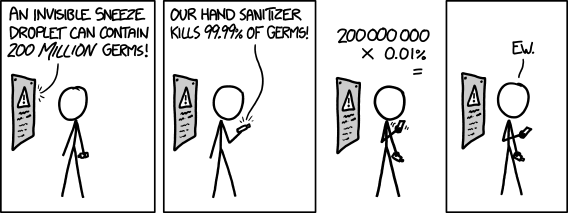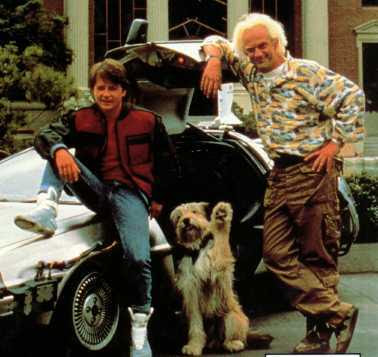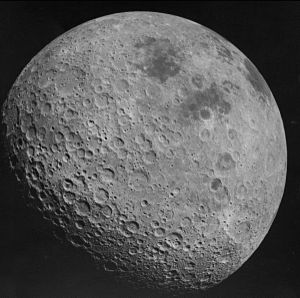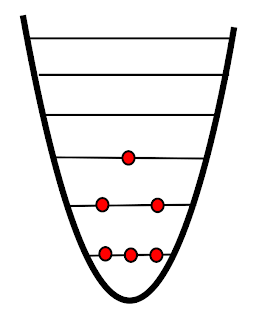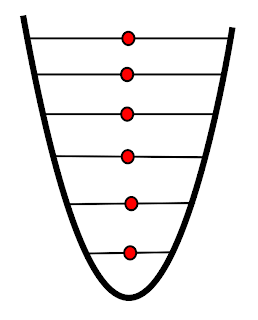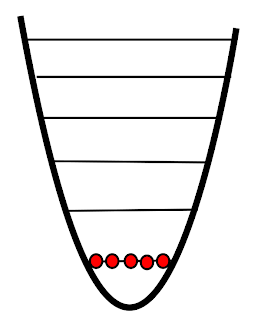
|
| From now on when I get nasty e-mails this will be my response. |
I've spoken plenty about the bad science in movies. It's all (mostly) in jest. Even so, I have been accused of taking things too seriously. To quote one piece of fan mail - "It's a f___ing movie, dude." To me it seems that anyone that took my article that seriously needs to take a few deep breaths themselves - it's a f___ing article, dude.
But, I've decided to accept the criticism and take a break from writing about bad science. Today I wanted to talk about the
good science in movies, starting with Star Trek. Now before you write me and tell me that Star Trek is full of bad science take a deep breath. I'll get to that in due time, but today I wanted to focus on the good things that have happened because of Star Trek. Some of these are directly inspired by the series, some may be prophetic, and others are just obvious extensions of technology we already had.
Teleportation
"Beam me up, Scotty!" - These may be the most famous words from the series. The were also never spoken on screen. Still, everybody knows them and many people still (mis)quote them. We are, of course, a long way from the technology that will transport a man from one location to another. We do have a good start on this, though.
Earlier this year in the science journal
Nature there was an article on quantum teleportation. In the quantum world we talk about light as photons. One of the weird things about quantum mechanics is that things exist in a
superposition. This isn't a "great position", it's a combination of every possible state in which the particle could exist. When a quantum particle is observed
the wavefunction collapses and that particle will only exist in one of the possible states. Quantum teleportation takes two photons that are entangled (their properties depend on each other), separates those two particles by any large amount of distance, and destroys one of them. All of the information about the destroyed particle is transported to the remaining particle. This makes communication at light speed possible. Destroying one particle sends a message to the person on the other end. There are some serious ethical dilemmas when you scale this up (if you could scale it up). Quantum teleportation won't transport you from one place to another - it will destroy everything that you are and create a new copy. Are you dead or are you the new copy?
Computers
Star Trek didn't invent the idea of a computer, so this probably goes in the "obvious extension of things we already had" category, but you have to wonder what computers would be like if Star Trek hadn't made them so awesome. Long before Siri, Majel Barrett-Roddenberry was the voice of the computers for Star Trek. Google recently announced plans to perfect voice commands, a project said to be . Of course a pleasant voice isn't the only computer technology predicted by Star Trek. The Star Trek computer was a diagnostic tool for the entire ship. If anything went wrong one need only give a simple command - "Damage report!" - and the computer could tell you what was wrong. Similarly modern cars, planes, and other vehicles have on-board computers to aid mechanics as well as drivers know what is going on. Another example is Jean-Luc Picard, who obviously had a tablet computer long before Steve Jobs made millions selling the iPad.
 |
| He's trying to decide whether or not to sue Apple. |
On second thought, maybe computer technology doesn't belong in the "Obvious extension of things we already had" category. A computer we talk to, computers in our cars, and tablet computers could just as easily be prophetic or inspirational. Either way I think it's an easy argument to say that computers wouldn't be the same without Star Trek.
Warp Drive
Einstein gave us a pretty simple equation:
γ = (1 − v2/c2)−1/2. In this equation
c is the speed of light,
v is the velocity of an object, and
γ (gamma) is the Lorentz factor - the factor by which length will contract and time will dilate at relative speeds (more on this in a different article). The result of this factor is a universal speed limit. Mass, energy, or information will never travel faster than 670,616,629 miles per hour.
So how does the enterprise get around this? They travel locally at a speed slower than the speed of light but distort space-time around them to get from point A to point B faster than light. The idea of warp drive inspired the
Alcubierre drive. There are problems, of course, and a functional Alcubierre drive may not be possible. The original formulation required the existence of tachyonic matter - matter that is always travelling faster than the speed of light. Other descriptions that avoid the need for tacyonic matter have been proposed, but still require massive amounts of energy. So we may not have warp drive (and we may never have it), but Star Trek has been a springboard to novel ideas in physics.
Replicators
"Tea, Earl Gray, Hot."
It seems to me that Picard could have saved quite a bit of energy by bringing a few tea bags with him into space. Nevertheless, this article isn't about the efficient use of technology so I'll have to let it go. The replicator, or at least something similar, is actually already available. 3D printers are able to make real, tangible objects from only a digital model. By "printing" an object in layers anything from car parts to toys can come from the machine. They're surprisingly affordable (low end models start around $1,000) and may someday be a household item. Imagine in the future going online to buy a digital blueprint of something you want and printing it out yourself. The days of waiting patiently for the UPS guy to show up will be long gone. Though if you want some tea just make it yourself.
Tricorders

|
Preinstalled software includes Angry Birds, Facebook and
Twitter apps, and Apple maps (which still doesn't work) |
The tricorder is the most powerful tool available to any member of Starfleet. Indeed, one of the difficulties of saying whether or not a tricorder exists is that a tricorder does so many things. A tricorder acts as a GPS receiver, helps physicians diagnose illness, and can give you detailed information of your surroundings. To a first approximation at least, a common smart phone is essentially a tricorder. In fact, we might as well start calling them tricorders - by calling it a phone aren't we naming it after its least commonly used function?
Smartphones aside, there are a few modern technologies that could easily pass for a tricorder. I choose to describe a tricorder as a miniature mass spectrometer.
1 A mass spectrometer is a scientific instrument used to measure the mass of molecules. They have a wide range of applications, sizes, costs, limitations, etc. They can be used to identify cocaine left on dollar bills, detect pollutants in the atmosphere, study pharmacokinetics, and much more. Mass spectrometers are arguably the most powerful tool available to scientists today.
2 The technology obviously exists in the Star Trek universe (Geordi La Forge uses a mass spectrometer in Season 4 Episode 5 - "Remember Me"), and a tricorder
must have contained a miniaturized mass spectrometer.
So, do miniature mass spectrometers exist? The one I use is about 6 feet high, 15 feet long, and 3 feet wide. A
more common mass spectrometer could be placed on a kitchen counter (if, for some reason, you wanted to do that).
Portable mass spectrometers do exist, and improving them is a very active area of research. There is a balance between making something portable and making something that actually works.
Did you like this article? Check out the rest of the series "Bad Science in the Movies"
Notes
[1] I probably describe it this way because I work with a mass spectrometer all day.
[2] Again, this statement might contain minor bias due to my research...
 Researchers at Penn State have recently redefined the "Goldilocks zone" - the distance from a star where liquid water is likely to be found on the surface. This is obviously an important thing for life. Here's the thing though, the previous definition put earth in the center of the Goldilocks zone (get it? Not too hot, not too cold). In the new definition the earth is out of the zone by about one million kilometers. {Correction: Earth is still within the Goldilocks zone, but is about one million kilometers away from the edge. This still puts us very close to being cooked, according to this model.}
Researchers at Penn State have recently redefined the "Goldilocks zone" - the distance from a star where liquid water is likely to be found on the surface. This is obviously an important thing for life. Here's the thing though, the previous definition put earth in the center of the Goldilocks zone (get it? Not too hot, not too cold). In the new definition the earth is out of the zone by about one million kilometers. {Correction: Earth is still within the Goldilocks zone, but is about one million kilometers away from the edge. This still puts us very close to being cooked, according to this model.}



